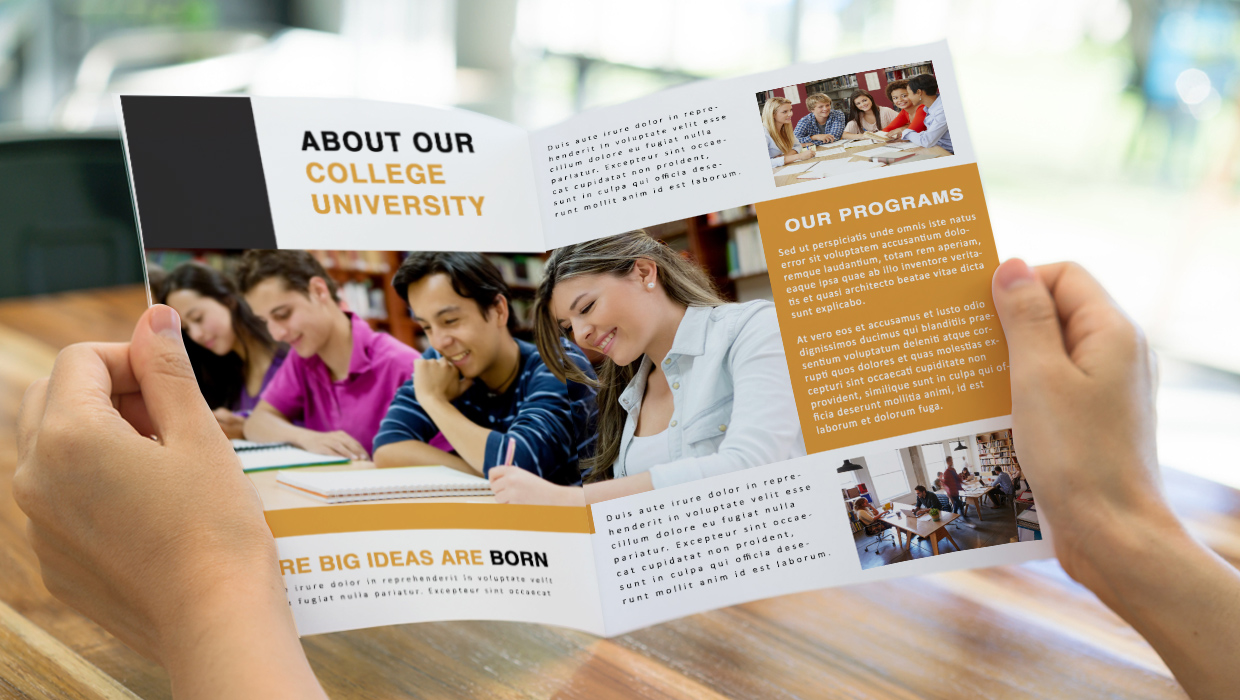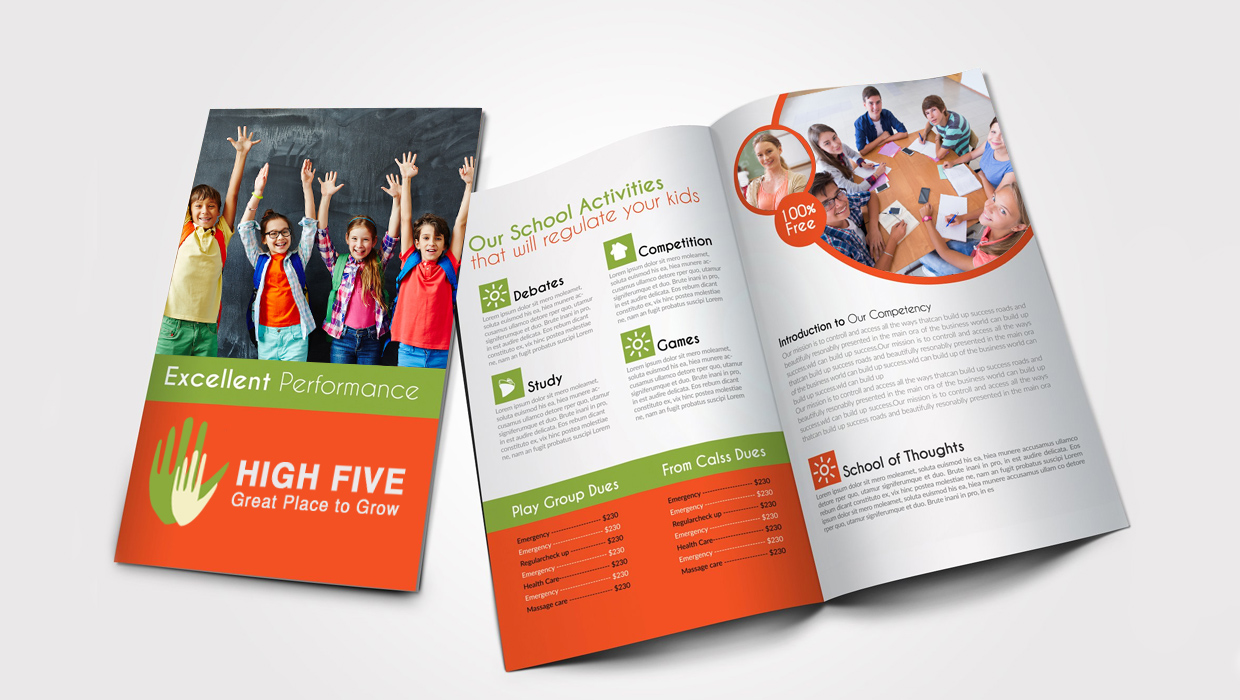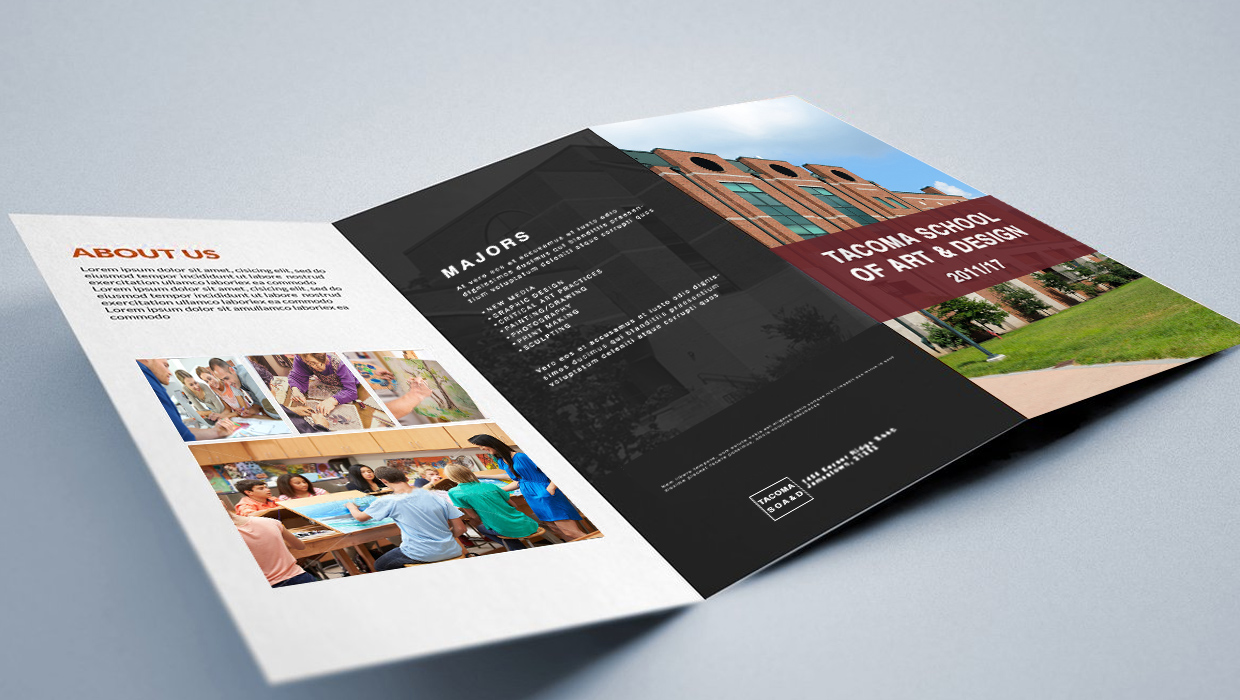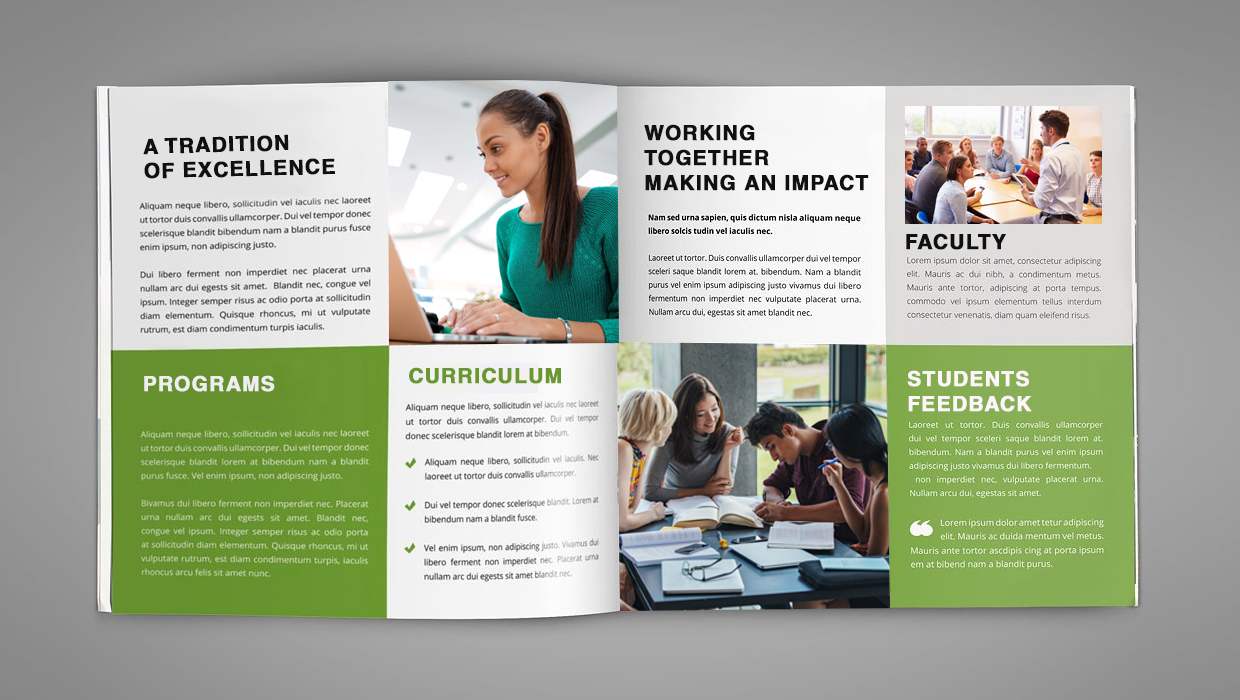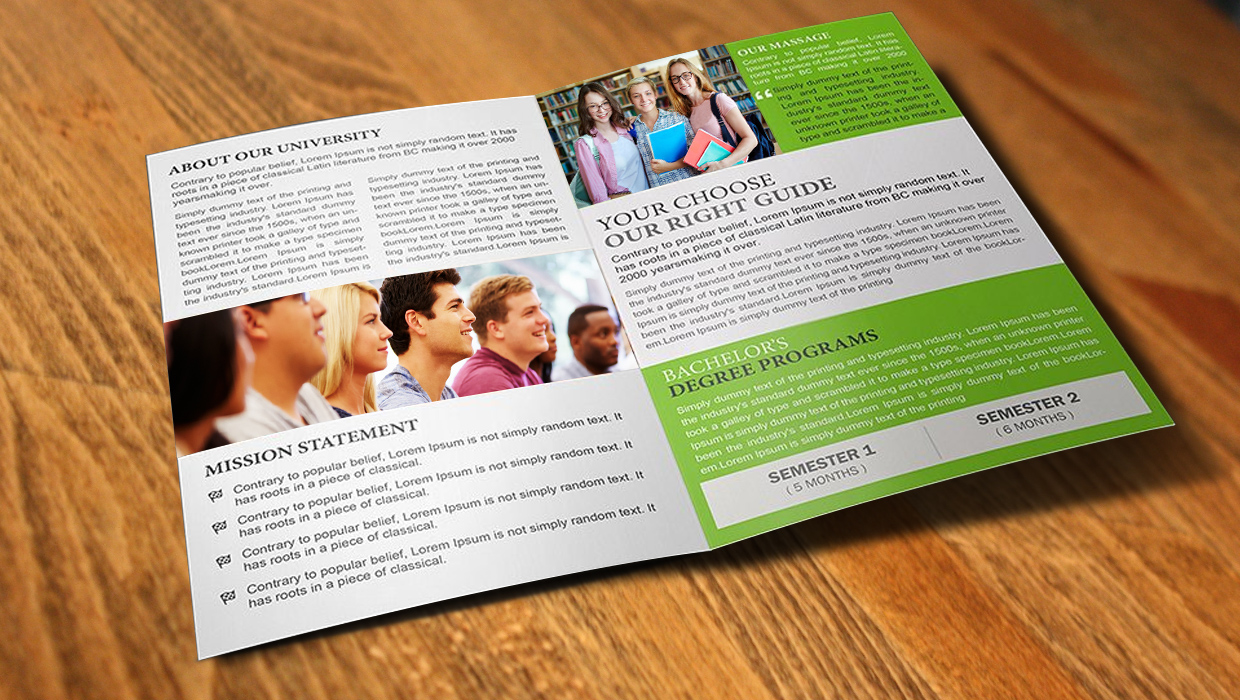Ramp Up Enrollment With These Tips for School Brochures
Not all educational brochures are equal. But you wouldn’t necessarily know that, considering many of them look the same. This is unfortunate given how much a brochure can affect the perception of a school’s brand. Brochures also have an immense potential for attracting potential students. Don’t be like the other schools. Follow these guidelines to ensure your educational brochure designs are a cut above.
1. Know your audience!
Are you trying to reach prospective students themselves, or their parents? It’s remarkable that many educational brochures don’t seem to have this in mind. K-12 schools may have to market to a different audience compared to colleges. And even among institutions of the same level, there are definitely some subtle differences between likely prospects that should inform your design and content.
2. Understand your brand.
It’s not only important to know your audience, but also to know what your institution is about. The design of your educational brochures should reflect your school’s values, its best qualities, as well as its aspirations. The copy, the images, layout, and the quality of the stocks used in your brochures should reflect what your want your brand to communicate. An educational brochure that doesn’t follow the school’s brand in any of those areas will always be a bit jarring, no matter how useful it is.
3. Keep the language straightforward.
Brochures may have plenty of space on them, but that doesn’t mean highfalutin words and walls of text are a good idea. Make sure the copy flows well and is easy to read. This isn’t dumbing down so much as making sure whoever reads your brochures is better able to understand the information on it. Keep the complex language for the actual academics.
4. Use professionally shot photos.
Good photos can add a lot of excitement and dynamics to a brochure. Unfortunately, many examples from educational institutions show an abject lack of investment in this area, resulting in stale brochures that seem to offer nothing extraordinary.
Yes, your phone might have a nice camera, but you wouldn’t want to use it market your school. There’s also a lot more to photography than having nice equipment. A good photographer could use any camera to get shots that enhance your institution’s brand, where most of us could only ruin it. Avoid stock photos and go for shots of your own staff, students, and facilities, as stock photos often make your brand look more generic. Invest in quality printing(see #6) so that your photos and other visual designs are faithfully reproduced.
5. Avoid clutter.
Building off point #3, not only should your language be concise, your other visual elements should likewise be carefully considered. This isn’t to say that educational brochures have to be minimalist. What could be considered visual clutter will vary depending on the brand or look that you’re going for. However, a lot of brochure designs we’ve seen use visual elements that neither follow the brand nor add excitement. If this is the case with your design, consider whether or not each element should be included.
6.) Invest in quality printing.
Regardless of who you choose to do your printing, we can’t overstate how critical quality is for multi-fold prints such as brochures. Some lower quality printing services may not be able to do things we take for granted, such as creating crisp folds in any kind of stock. Others may not be able to faithfully reproduce the colors and specific alignment your designs might require. They may also have limited options when it comes to creating tabs, perforations, trims, and other custom options.
Visit our site to learn more about brochures, or contact one of our friendly customer service representatives.
Arthur Piccio is a feature writer and subject matter expert for the PrintPlace Blog. In his spare time he studies guitar and writes about goats.


